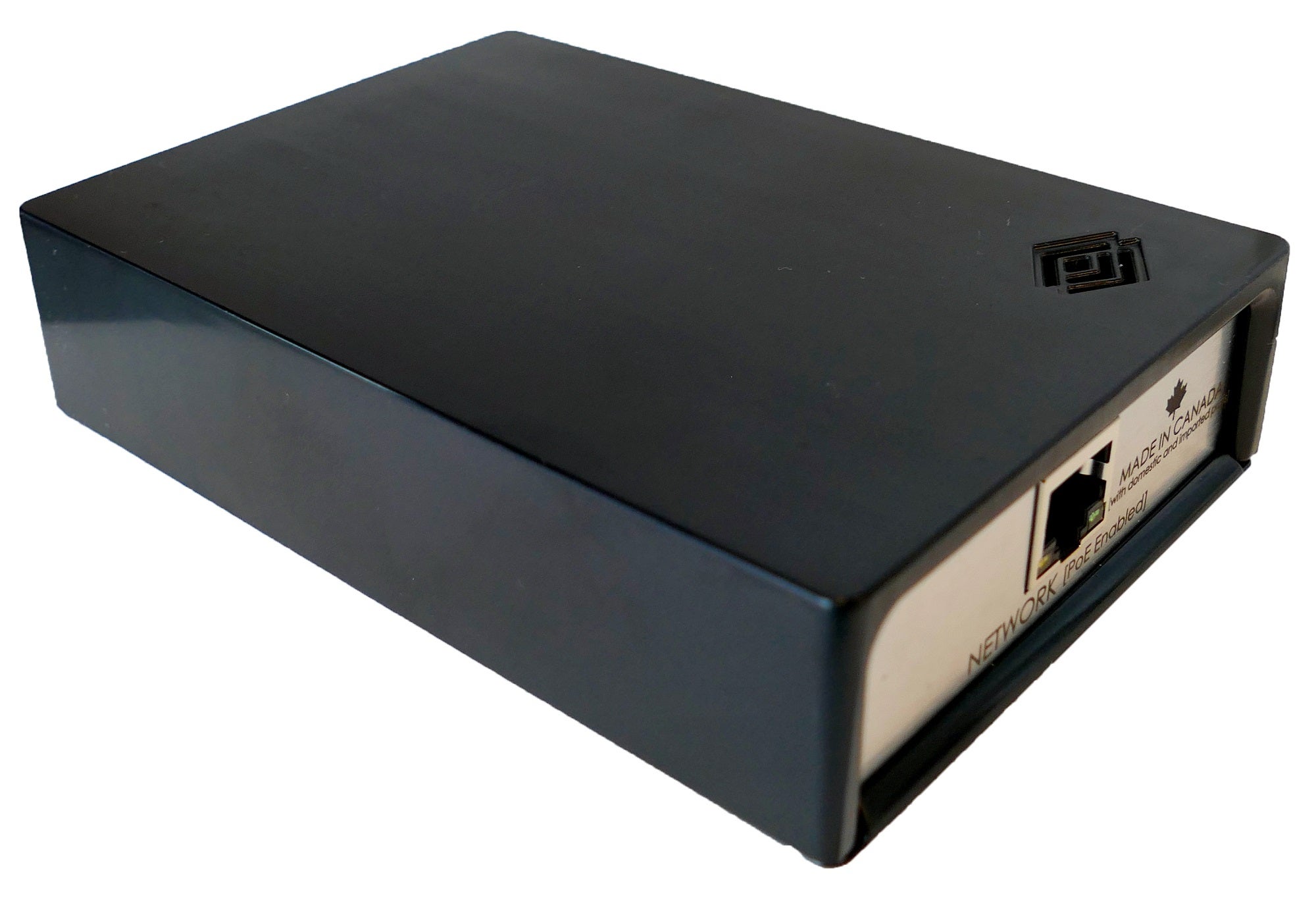
Engineering professor takes new cybersecurity technology out of the lab and into the real world
It has been a long but rewarding journey since Sebastian Fischmeister first hit on the concept of using involuntary emissions such as power consumption as a window into the workings of computer systems.
Early work on the idea as a means of debugging programs without shutting them down earned the electrical and computer engineering professor a best paper award soon after he came to the University of Waterloo.
And now, more than a dozen years and an important pivot later, Fischmeister, his research team and a spinoff hardware company are using the novel approach to help protect Ontario municipalities from costly, disruptive cyberattacks.

A small box collects data on power use for analysis by AI software.
“It feels great to see technology make the transition from pen and paper, from a theoretical idea, to the actual detection of spreading ransomware to protect computing systems,” he says.
Looking back, Fischmeister says it would have been easy to only pursue the idea of using side-channel information – such as sound, heat, radio frequency and power consumption – as warning signs of attack in a string of academic papers.
But he was encouraged by the entrepreneurial support system and, crucially, creator-owned intellectual property policy at Waterloo to take his theory out of the lab and into “the real, messy world.”
The result is Palitronica Inc., a company Fischmeister co-founded in 2019, and ongoing projects with $1.8 million in backing from the Department of National Defence (DND), the Natural Sciences and Engineering Research Council of Canada, Natural Resources Canada, and industry partners in defence and critical infrastructure.
Technology shows great promise
“We are pleased to collaborate on this novel approach to ensure we keep up with change by investing in modern automated tools and methods that can be used to increase the detection of malicious cyberattacks,” says Eric Fournier, Director General Innovation, Innovation for Defence, Excellence and Security, at the DND.
“The ability, speed and accuracy of human triage activities of this unique Canadian technology show great promise to efficiently increase the safety and security of our Canadian Armed Forces.”
To prove out the technology, Palitronica started by developing a small, rectangular box to monitor the power consumption of computers in critical infrastructure.
The hardware was developed after Fischmeister and his colleagues realized about six years ago that the approach they first used to debug computer programs could also be applied to ensuring the security of computer systems.
“We're excited about the commercial possibilities of power monitoring technology,” says Paul Lucier, chief revenue officer of Palitronica, which is now in the prestigious Y Combinator startup incubator in Silicon Valley. “Current solutions have limited effectiveness, so it's the right time to introduce a fresh, innovative approach that is governed by the laws of semiconductor physics.”
We would send an alert
The box collects data and sends it to artificial intelligence (AI) software capable of determining if power usage is consistent with known, predictable patterns for the monitored systems.
If it isn’t, the AI sends an alert to security officials within the organization that its infrastructure might be under attack, including via the introduction by hackers of ransomware to steal or lock data.
“If suddenly, for instance, several machines exhibit a similar pattern of high-power usage in specific patterns, we would raise an alert that there might be spreading crypto-ransomware in the network,” Fischmeister says.
Designed and developed to complement, not replace, existing security controls, such as network intrusion detection, the new technology is now being tested in several Ontario municipalities, with a dozen more interested in participating in the project.
“Ransomware and malware are serious threats to municipal governments,” says Jamie McGarvey, the mayor of Parry Sound and president of the Association of Municipalities Ontario.
An alarming increase in attacks
“We have seen an alarming increase in attacks and are encouraged that the University of Waterloo, the security company Palitronica, and the federal government are working with municipalities to improve municipal IT infrastructure systems.”
Fischmeister says one of the advantages of the power monitoring technology is that it operates outside an organization’s computer system, making it much less vulnerable to tampering itself. It can also be added to any existing system without the need to for recertification, providing fully retrofittable security.
Palitronica is now utilizing defence proof of concept projects to find the right product-market fit for the technology. With power usage at its core, it could be applied to almost any system that uses electronic devices.
“It could be used to protect network equipment and computers, but also water supply, 5G infrastructure, trains and airplanes – we can protect anything that consumes power,” says Fischmeister, who is also a cross-appointed professor of computer science at Waterloo.
Main photo by Ricardo Ortiz of Pexels.